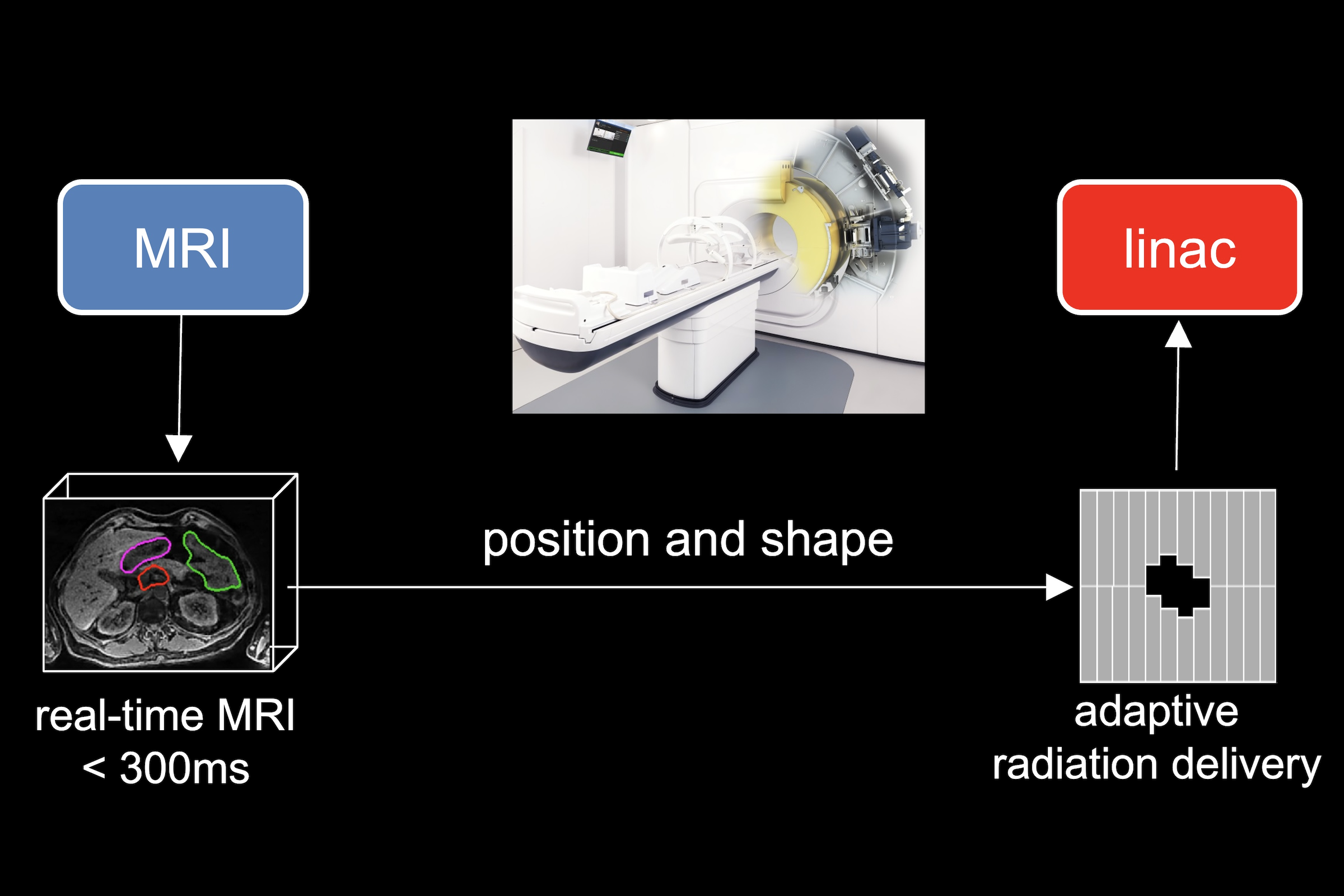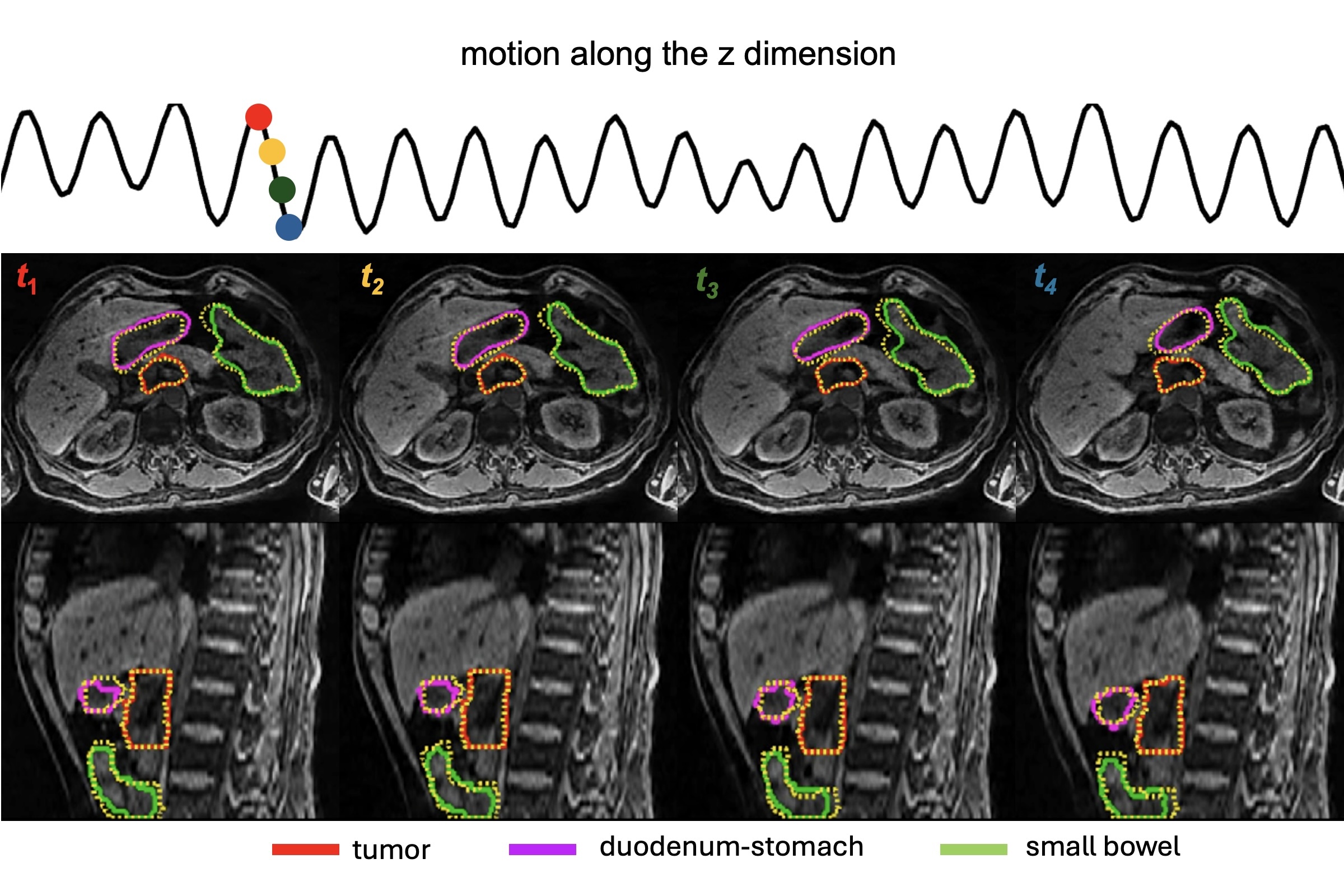The MR-linac system combines an MRI scanner and a linear accelerator for MRI-guided radiotherapy. One of the main promises of the MR-linac is to adapt treatment of tumors affected by motion to increase radiation dose in the tumor while sparing healthy tissue, as shown in Figure 1. However, the current speed of MRI is not able to perform 3D MRI with a latency lower than 300ms, which would be needed to adapt radiation therapy of tumors affected by respiratory motion.

Figure 1: Real-time adaptive radiotherapy on the MR-Linac requires to perform MRI with a latency lower than 300ms to follow motion of the tumor and organs at risk.
We are developing novel real-time 3D MRI technology based on the idea of signature matching, where a 4D motion dictionary consisting of pairs of 3D motion states and signatures is computed before treatment, and then fast signature-only data acquisition and signature matching is performed to produce 3D images on the fly with a total latency of less than 300ms. Our technique called MR SIGnature MAtching (MRSIGMA) uses a stack-of-stars k-space trajectory, where the central k-space point for each angle defines the motion signature, and deep learning 4D reconstruction. Figure 2 shows an example of MRSIGMA with total latency of 275ms on a patient with pancreatic cancer. In addition to continuously adapting radiation delivery according to motion, MRSIGMA would enable to compute the effective radiation dose deposited on the tumor over time.

Figure 2: Real-time 3D MRI with a total latency of 275ms using MRSIGMA for a patient with pancreatic cancer